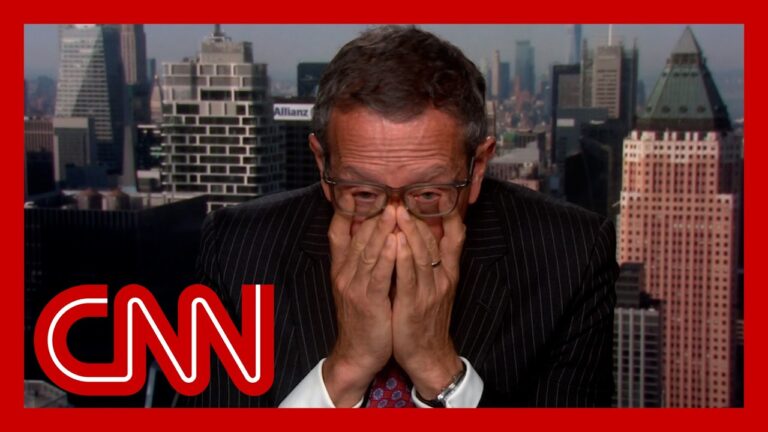Video at the bottom!
Volatility and whiplash have defined Wall Street as economic uncertainty deepens and global anxiety escalates. U.S. markets opened significantly down, grappling with the fallout from Donald Trump’s intensifying trade war, which recently intensified with threats of new tariffs on China. The Dow Jones experienced wild fluctuations, initially rising by 800 points due to an unfounded rumor before plunging approximately 700 points, reflecting the tumultuous market mood.
The atmosphere has been similarly bleak internationally, with European stocks showing consistent declines and Asian markets closing sharply lower. Despite this unsettling economic climate, President Trump urged Americans to remain calm, asserting that the market would eventually stabilize and that a downturn was not inevitable. His administration has indicated plans to impose 50% tariffs on Chinese goods in response to Beijing’s retaliatory measures.
The White House continues to downplay economic concerns, suggesting that a robust recovery is imminent. Trump’s economic strategy, described as a “reset,” lacks substantial clarity, with advisers conveying mixed messages. Some officials insist the current turmoil is necessary for creating a “golden age” for American workers, while others present a more uncertain outlook.
Prominent economists have raised alarms, with Goldman Sachs predicting a 60% chance of recession, driven by disruptive policies that have created significant uncertainty on Wall Street. Observers note that the administration inherited a healthy economy, characterized by low unemployment and declining inflation, contrasting with claims of an economic crisis bequeathed by former President Biden.
As tensions mount, the administration’s tariff strategy is being scrutinized by business leaders. Many are hesitant to invest in new facilities amid unpredictable economic policies, preferring instead to endure short-term costs rather than commit to long-term investments in fluctuating circumstances. Trump’s mixed messaging—signaling both a desire for permanent tariffs and smoothing negotiations—has left business leaders in a state of confusion, impeding their planning and investment decisions.
Amidst this chaos, Trump’s demeanor remains notably unfazed. Instead of addressing the nation about the economic turmoil, he continued with leisure activities, reflecting an approach that draws both concern and criticism regarding his priorities in managing economic uncertainty. The lack of coherent strategy appears to exacerbate the unrest, leaving observers in a state of apprehension about the future trajectory of the market and the overall economy.


